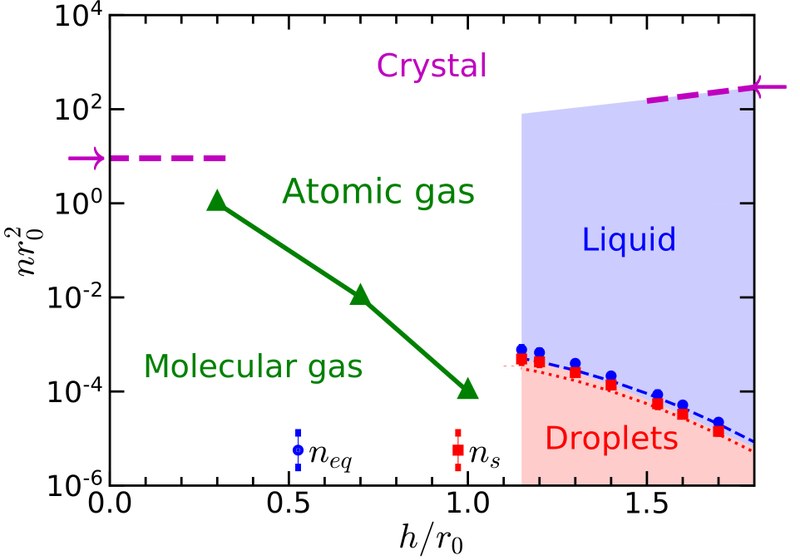Researchers publish theoretical prediction of a new type of quantum liquid
Feb 21, 2022
Recently Grecia Guijarro has defended her PhD thesis under supervision of Jordi Boronat and Grigory Astrakharchik in the research group "Approaches to the first principles in condensed matter physics: quantum effects and complexity". The theoretical prediction of existence of a novel type of a quantum ultradilute liquid has been published in Physical Review Letters journal. It was found that dipolar interactions on their own are sufficient for creating an ultradilute quantum liquid in a bilayer geometry.
Recently, an entirely new class of quantum liquids has been created in which the quantum fluctuations stabilize the system, which otherwise would be unstable at the mean-field level. A distinguishing feature of such liquids is their ultradilute density, which can be more than 8 orders of magnitude lower than that of liquid helium. So far, two types of ultradilute quantum liquids have been experimentally created: in dipolar systems and in two component Bose-Bose mixtures. In both cases, distinct kinds of interaction potentials were needed. We show that ultradilute quantum liquids can be formed with ultracold bosonic dipolar atoms in a bilayer geometry using the same kind of interaction potential. Contrary to previous realizations of ultradilute liquids, there is no need for stabilizing the system with an additional repulsive short-range potential. The advantage of the proposed system is that dipolar interactions on their own are sufficient for creation of a self-bound state and no additional short-range potential is needed for the stabilization. We perform quantum Monte Carlo simulations and find a rich ground-state phase diagram that contains quantum phase transitions between liquid, solid, atomic gas, and molecular gas phases. The stabilization mechanism of the liquid phase is consistent with the microscopic scenario in which the effective dimer-dimer attraction is balanced by an effective three-dimer repulsion. The equilibrium density of the liquid, which is extremely small, can be controlled by the interlayer distance. From the equation of state, we extract the spinodal density, below which the homogeneous system breaks into droplets. Our results offer a new example of a two-dimensional interacting dipolar liquid in a clean and highly controllable setup.
The study entitled Ultradilute Quantum Liquid of Dipolar Atoms in a Bilayer has been published in the Physical Review Letters journal

Share: